Mimosa is the second brightest star in the constellation of Crux, and the 20th brightest star in the night sky. It is part of an asterism called the Southern Cross.
Key Facts & Summary
- Mimosa is a multiple star system which is around 280 light-years / 85 parsecs away from the Sun.
- The primary pair of stars consists of a spectroscopic binary star system composed of a blue-white giant star of stellar classification B0.5 III – named Crucis A, and a main sequence blue-white dwarf star named Crucis B, which has a stellar classification of B2V.
- The apparent magnitude of this star system is 1.25 but the primary star, Crucis A, is a Beta Cephei variable star. Its apparent visual magnitude varies from 1.23 to – 1.31.
- Crucis A has around 16 times the mass of the Sun and around 8.6 solar radii.
- Little is known about Crucis B, other than the fact that it has around 10 times the sun’s mass.
- Crucis A is a very bright star, around 34.000 times brighter than the sun.
- The star’s age is disputed but it is estimated to be around 8 to 11 million years old, quite young in comparison to the sun.
- Crucis A has a surface temperature of around 27.000 K, much hotter than our sun – it is the hottest first magnitude star.
- The two stars have an orbital period of about 5 years.
- They are on average, 8.7 AU away from each other, but their highly eccentric orbit takes them as far as 12 AU away, while also bringing them as close as 5.4 AU.
- A third star has been discovered and it’s thought to be a pre-main sequence star. An additional two stars have been detected at around 44 and 370 arcseconds away, though, analysis suggests that these stars aren’t related to the system but rather appear as companions in the line of sight.
- Similarly to Acrux, the Beta Crucis system is suspected to be a member of the lower Centaurus-Crux sub-group of the Scorpius-Centaurus Association – though, observations continue to establish this.
A long time ago, the stars of the Southern Cross were visible north of latitude 40°N, but due to the precession of the equinoxes, they have “moved” below the horizon for most northern observers.
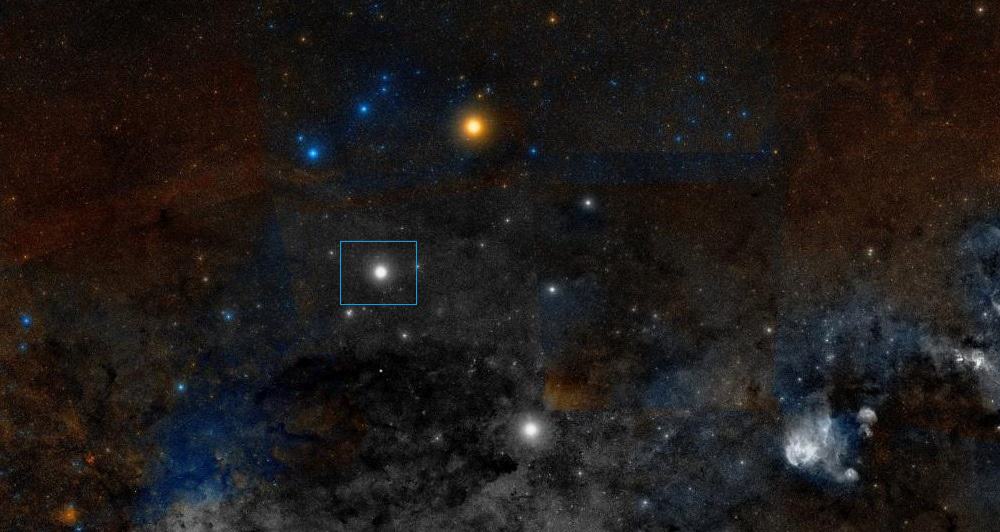
The ancients saw the stars of the Crux constellation as part of the larger Centaurus constellation. The name Mimosa comes from the Latin word “mime” – possibly associated with the flowering plant of the same name. Another name for this star is Becrux, which is a contraction of its Bayer designation, Beta, and the constellation in which it resides, Crux.
The Southern Cross asterism of which Mimosa is part of carries cultural significance for many countries in the southern hemisphere such as Australia, New Zealand, Brazil, Papua New Guinea, and Samoa. The star appears on many flags and bears different meanings.
Formation
Mimosa is thought to have been formed around 8 to 11 million years ago. Gas and dust were pulled together by gravity and resulted in one of the most important stars for the southern hemispheres, Mimosa.
It is not yet clear if Mimosa is 100% part of the Scorpius-Centaurus Association, estimates suggest that there is a 73% chance that it might be since it has a similar age, position, and motion through space. If this is the case then its origin might be better investigated and explained. It’s possible that Mimosa shares the same origin as Acrux.
Distance, Size, and Mass
Mimosa is around 280 light-years / 85 parsecs away from the Sun. It has around 16 times the mass of the Sun and around 8.6 solar radii. In theory, it is at least 8.4 times bigger than our sun.
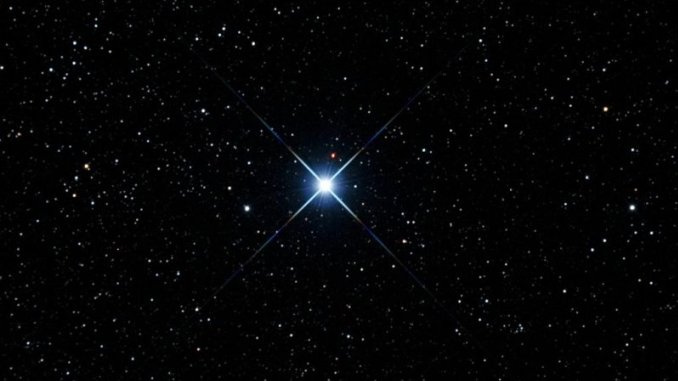
The secondary star of this spectroscopic binary system, Crucis B, is also bigger than the sun, having at least 10 solar masses.
Other Characteristics
The apparent magnitude of the Mimosa star system is 1.25 but the primary star, Crucis A, is a Beta Cephei variable star. Its apparent visual magnitude varies from 1.23 to – 1.31. Since its surface temperatures fall into the upper limit of the instability strip, three distinctly different periods of pulsation, ranging between 4.03 – 4.59 hours, have been identified. None of these are related to the star’s high velocity though.
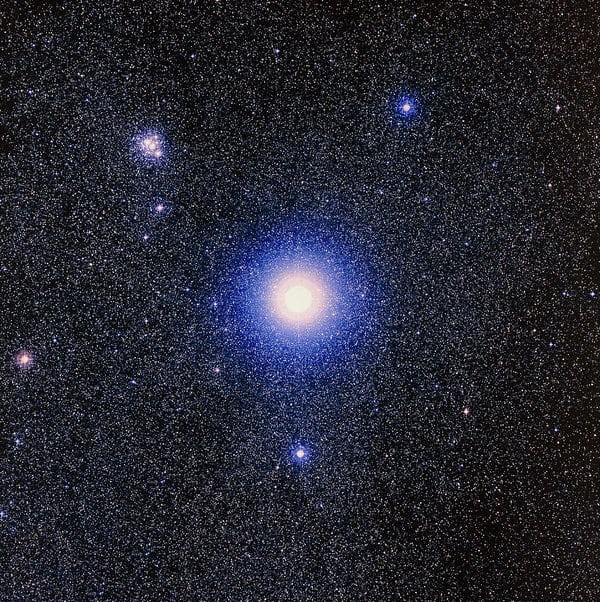
Mimosa’s rotational velocity is at around 35 km / 21.7mi per sec. These results differ since the orbital plane of the system is inclined, thus it is estimated that Mimosa’s rotational velocity is much higher, at around 120 km / 74.5 mi per second. If this is the case, Mimosa rotates on its axis once every 3.6 days.
The blue giant is emitting very strong stellar wind that blows off materials at a rate equivalent to around one solar mass every one hundred million years. The solar wind leaves the star at a speed of around 2.000 km / 1.242 mi per second.
Mimosa is around 34.000 times brighter than our sun but much of this light/energy output is in the invisible ultraviolet spectrum. Its surface temperatures are around 27.000 K, almost 5 times hotter than our sun – it is thus the hottest first magnitude star discovered.
Stellar System
The two blue stars have an orbital period of about 5 years. They are on average, 8.7 AU away from each other, but their highly eccentric orbit takes them as far as 12 AU away, while also bringing them as close as 5.4 AU.
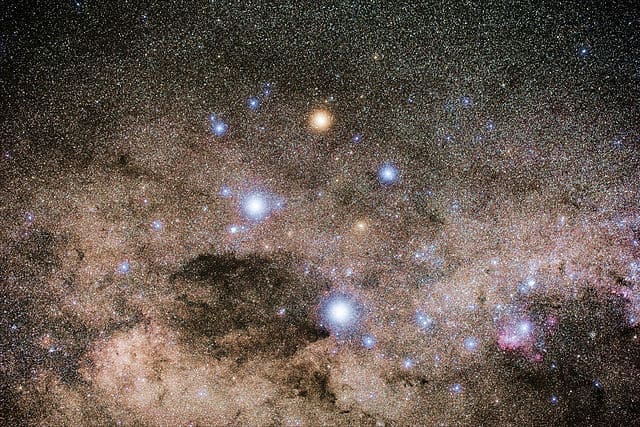
A third star has been discovered and it’s thought to be a pre-main sequence star. This star is a pre-main sequence star and it is thought that its 350 AU away from the primary pair Crucis A & B, completing one orbit around them once every 16.000 years.
An additional two stars have been detected at around 44 and 370 arcseconds away, though, analysis suggests that these stars aren’t related to the system but rather merely appear as companions in our line of sight.
Location
Though most of the observers in the northern hemisphere cannot see Mimosa, for those in the south, it appears as one of the bright stars forming the Southern Cross asterism.
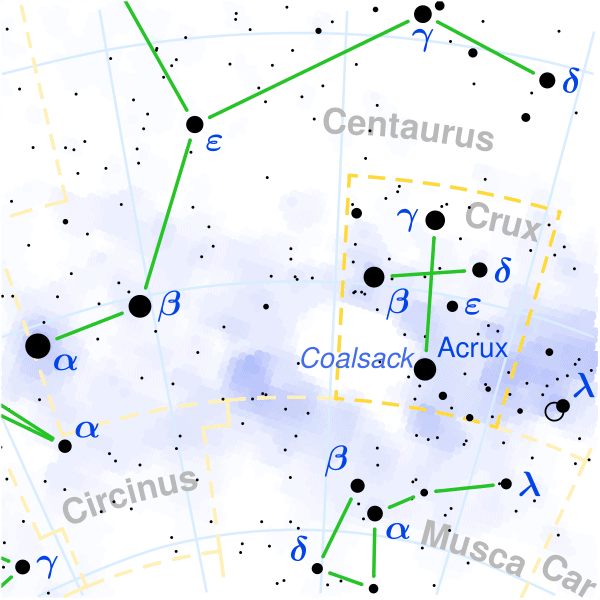
Mimosa is located in the constellation of Crux which is the smallest constellation in the night sky. This constellation and all of its stars and deep-sky objects are best seen during the month of May.
The Future
Crucis A will most likely end its life in a supernova explosion in just a few million years. The other star, Crucis B, has 10 solar masses and thus it is also a likely candidate for a supernova explosion but since the star hasn’t been studied as greatly as the primary star A, it is difficult to estimate when.
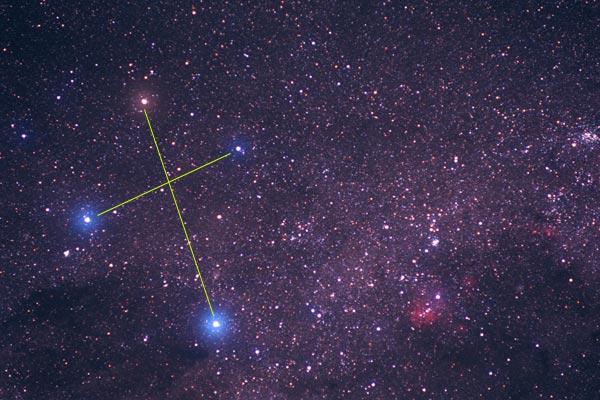
Did you know?
- The flag of Brazil features 27 stars with each and every one of them symbolizing a Brazilian Federative Unit. Mimosa is one of these stars, it represents on the flag of Brazil, the state of Rio de Janeiro.
- The Chinese knew Mimosa as the Third Star of Cross – it is an asterism that consists of Acrux, Mimosa, Gacrux, and Imai – the same stars forming the Southern Cross asterism.
- Since it is visible to the naked eye, no one can be credited as to its discovery however, the German astronomer Wulff-Dieter Heintz can be credited for discovering in 1957 that the star is not alone, and it is, in fact, a spectroscopic binary star.
- Mimosa is the second-brightest star in the Southern Cross asterism.
Sources:
Image source:
- https://www.star-facts.com/wp-content/uploads/2019/10/Mimosa.jpg
- http://www.astronomytrek.com/wp-content/uploads/2017/05/Beta-Crucis.jpg
- https://render.fineartamerica.com/images/rendered/default/print/7.875/8.000/break/images-medium/optical-image-of-the-star-mimosa-or-beta-crucis-celestial-image-co.jpg
- https://upload.wikimedia.org/wikipedia/commons/thumb/c/cc/Deep_Crux_wide_field_with_fog.jpg/640px-Deep_Crux_wide_field_with_fog.jpg
- https://upload.wikimedia.org/wikipedia/commons/thumb/8/8d/Crux_constellation_map.svg/600px-Crux_constellation_map.svg.png
- https://en.es-static.us/upl/2009/01/crux_Christopher_J_Picking.jpeg
